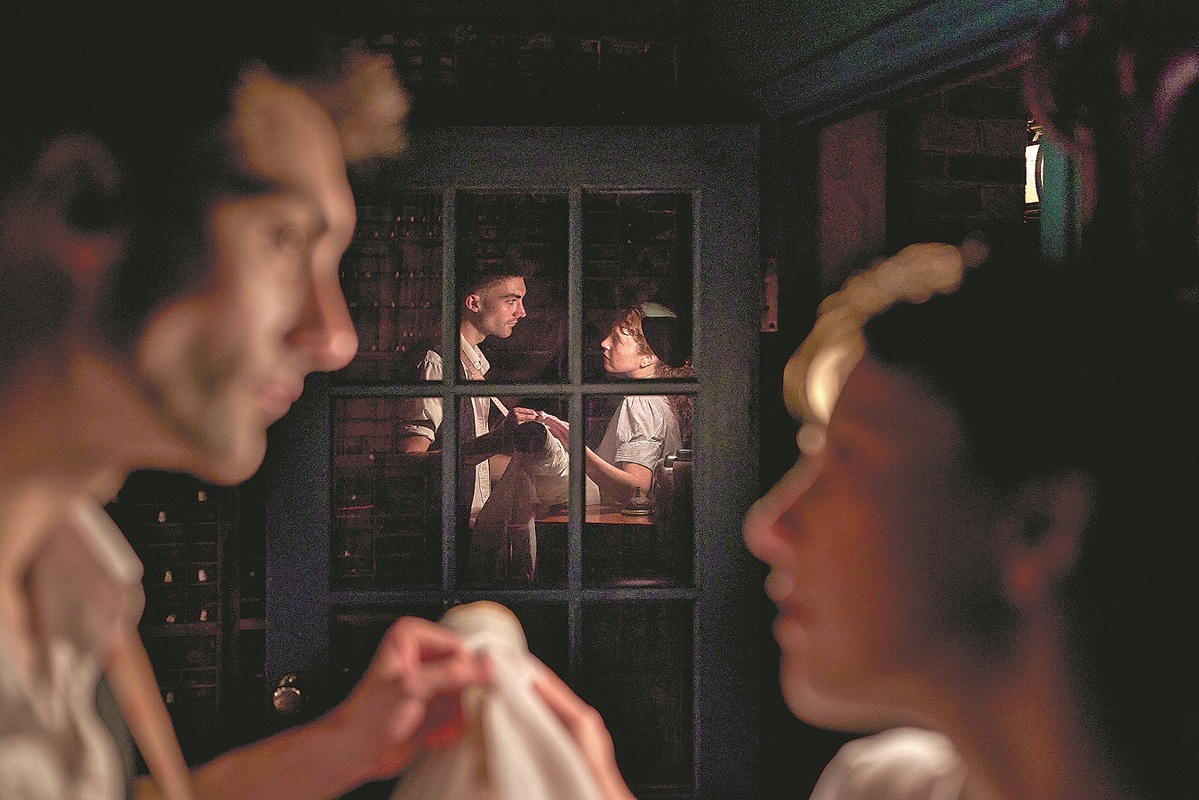
The distant echo of jazz music fills the air as Yang Shuhui, with her face hidden behind a white mask, stands in a dimly lit room. Inches away, a dancer in a gown performs a haunting sequence as Lady Macbeth's descent into madness unfolds in silent movements.
This isn't traditional theater. This is Sleep No More Shanghai, a local adaptation of a pioneering immersive production based on Shakespeare's tragedy Macbeth and told through a darkly cinematic lens.
"Each visit reveals something new," said Yang, a repeat attendee and participant in the play.
"The first time, I was completely lost. By my third visit, I had discovered hidden rooms and other storylines I never knew existed. It is like being inside a film where you are both audience and participant," she said.
This fusion of art and the audience experience represents a cultural evolution. "Traditional theater frames stories through a director's vision, but here, the fourth wall dissolves. The audience can discover content themselves," said Ma Chencheng, president of SMG Live and the Chinese producer of Sleep No More Shanghai.
The form gained momentum in the 2000s when British immersive theater company Punchdrunk pioneered Sleep No More in London and New York, redefining the possibilities of the art form. Since 2016, Punchdrunk International and SMG Live have coproduced a re-imagined version of the original production set in Shanghai in the 1930s.
Since its debut nine years ago, the production has drawn over 620,000 visitors and grossed 550 million yuan ($75.9 million), mirroring the explosive rise of China's immersive entertainment sector.

Use your illusions
According to the 2024 White Paper on the Development of China's Immersive Industry released in May, the sector's consumer market size in China reached 92.7 billion yuan by the end of 2023.
The immersive industry includes escape rooms, immersive performances, virtual reality shows, light and shadow art exhibitions, immersive indoor theme parks and various other entertainment ventures, according to the paper prepared by the Illuthion International Immersive Industry Platform.
Immersive theater traces its roots to the 1960s and experimental site-specific, or environmental, performances. Pioneers like the United States theater director and innovator Richard Schechner emphasized audience integration into the performance narrative, challenging traditional theater conventions.
"Immersion describes a psychological state where individuals invest all their energy in an activity, forgetting the outside world and even themselves," said Wu Fan, an associate professor at Shanghai Jiao Tong University's USC-SJTU Institute of Cultural and Creative Industry. "The key elements that create true immersion are presence, interactivity and imagination."
"We're witnessing a broader economic shift toward the experience economy," Wu added. "When experience becomes one of the dominant economic drivers, immersive entertainment naturally flourishes."
Ma, the SMG Live president, said Shanghai has fertile cultural ground to nurture new ideas.
ALSO READ: Music festival hits a celebratory high note
"The audience here, and the city itself, are considered the most innovative and receptive to fresh concepts in China. New arts take root here first — if they resonate, they spread nationwide," he said.
Statistics support this observation. By 2023, China hosted 32,024 immersive projects, an 81.5 percent surge from 2019. Shanghai leads in performance numbers nationwide and, together with Beijing, commands a third of national immersive spending, according to the white paper.
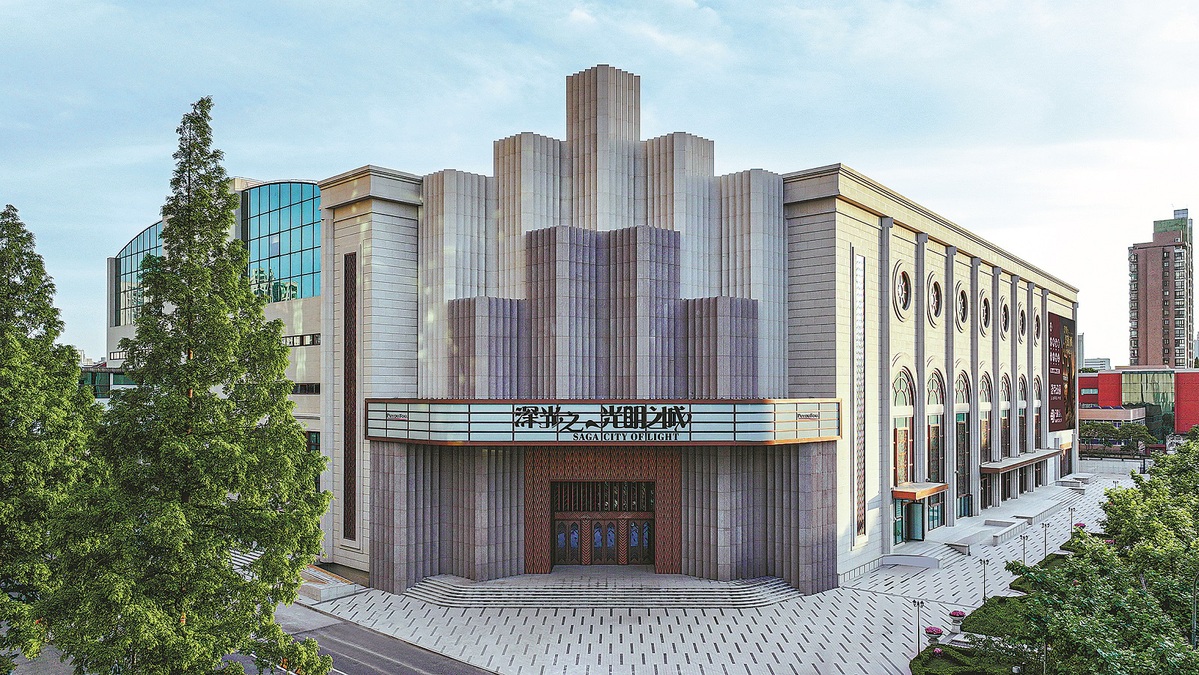
City of light
Shanghai's embrace of cultural innovation has spawned ambitious productions. SAGA City of Light, a Sino-French collaboration with French production company Puy du Fou, transforms a 12,000-square-meter performance area into 1930s Shanghai. It features 100 actors, 50 movie-scale scenes, and 26,000 vintage props.
"We aim to bring the audience as close to reality as possible," said Gilles Ledos, executive creative director at Puy du Fou Asia. "Our intention was not to conjure up a fictional world from scratch; instead, we wanted our guests to seamlessly immerse themselves in a genuine environment."
Ledos said that 1930s Shanghai was deliberately chosen for its rich cultural tapestry. "It was a very cosmopolitan place, and the Paris of the East," he explained.
The production blends Chinese artistry — with 80 percent of the creative team being local talent — and Western theater techniques. Audiences encounter traditional elements like martial arts and shadow puppetry alongside innovative staging that marries Puy du Fou's style with Chinese aesthetics, according to Ledos.
"The inclusiveness of Shanghai culture has created adaptability and integration of foreign cultures. As long as the content and form of the performance are good, Shanghai will embrace you with open arms," he said.
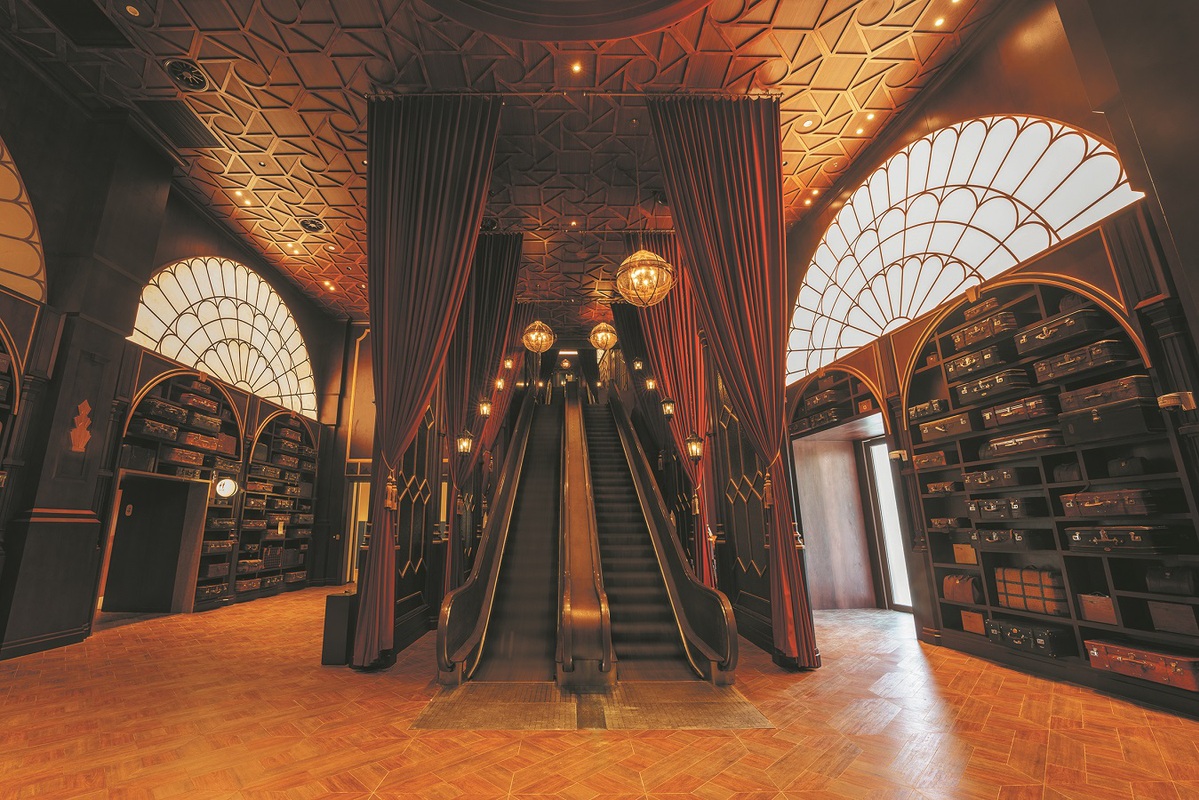
Human connections
At the New World immersive theater performance in Shanghai's Songjiang district, the audience follows more than 40 actors through "four mansions" over six hours to experience an anti-war story based on the War of Resistance Against Japanese Aggression (1931-45).
"The first half's investigative part offers brilliant actor interactions, while the second half weaves 10 storylines across complex spaces," said Zhang Min, a 28-year-old audience member. "The climactic battle scene, with its synchronized lighting and fireworks, brought me to tears."
Technology enriches these experiences in novel ways. At Le Bal de Paris (Paris Ball), virtual reality amplifies human connection as guests don motion-tracked gowns to waltz with hologram partners.
"If the audience feels present in a work, they will definitely feel immersed. We use VR technology specifically to enhance that sense of connection," said Weng Shihui, the show's Chinese producer.
While VR can sometimes feel isolating, Le Bal de Paris creates a warm, communal experience through technology, she said. Audiences see their own virtual bodies and those of other participants, select from haute couture virtual outfits and dance with real performers in a shared virtual space.
ALSO READ: Joining ingenuity with culture
"Our audience ranges from eight years old to septuagenarians. They embrace this shared dreamscape. Shanghai audiences? They're insatiably curious," Weng added.
Wu, the associate professor, said immersive audiences aren't defined by age, but by curiosity. "They include digital natives seeking interaction, the new middle-income group pursuing spiritual enrichment, and culturally savvy retirees looking for new forms of engagement."
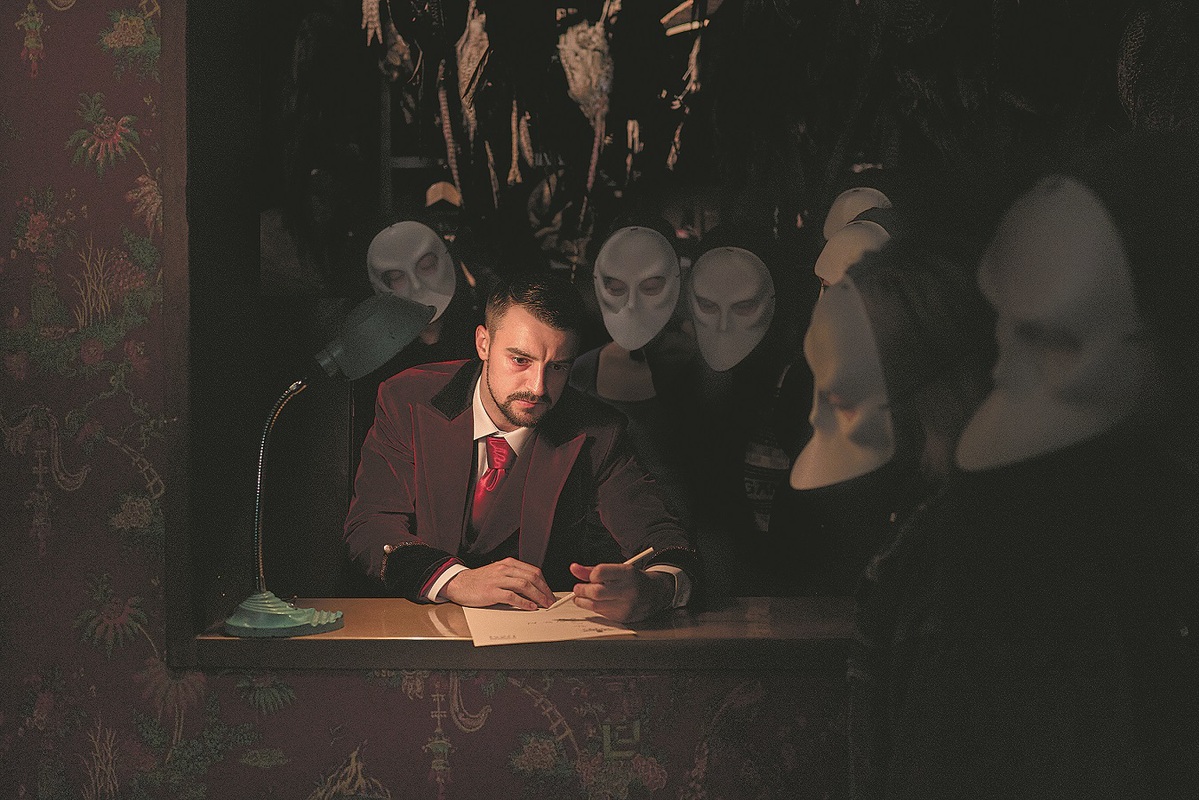
Dinner and a show
Creating immersive content, however, presents distinct challenges, Wu said.
"Unlike traditional narratives, immersive storytelling demands multilayered plots that accommodate audience agency while preserving mystery," she explained. "The content must reward repeated visits and diverse audience choices."
Moreover, the industry requires a complete ecosystem — upstream content creation, midstream technology implementation and downstream distribution, she said.
Wu's research shows that roughly half of audiences combine shows with nearby dining, generating significant economic ripples. The McKinnon Hotel, Sleep No More Shanghai's performance venue, combines retail, dining and accommodation with theatrical experiences. The production drives cross-industry collaborations spanning fashion, real estate, e-commerce and more. The New World performance incorporates intangible cultural heritage cuisine during performances, while the SAGA City of Light project is expanding to include themed restaurants, boutiques and cafes.
Even dining has gone immersive. Gongyan, a themed restaurant recreating imperial court ceremonies, provides a dining experience that includes traditional performances and dynasty-spanning rotating menus. Ultraviolet, Shanghai's multisensory restaurant, combines dishes with 360-degree projections, music, and scents for a comprehensive sensory journey.
"When culture, tourism, and commerce converge, and people travel to a city for performances, it influences urban development," SMG Live president Ma said. "Within 5 to 10 years, as these cross-industry linkages mature, Shanghai could attract audiences from across Asia and globally."
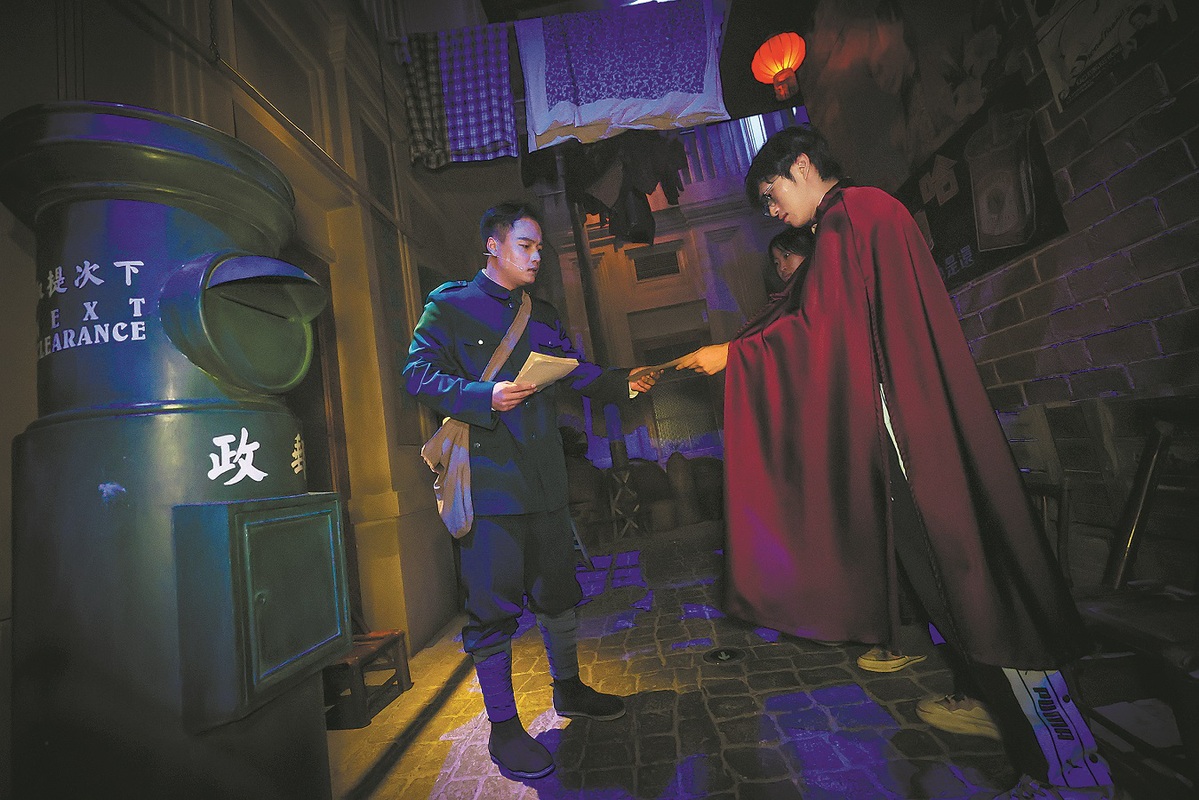
International hub
Shanghai's cultural development extends beyond immersive theater, with the metropolis positioned as Asia's premier destination for international performances. The city has become a hub for "theater marathons" — enthusiasts watching multiple shows in quick succession over weekend visits.
"Shanghai is ahead of the curve when it comes to the cultural industry," Wu said. "Its performing arts market is particularly developed. This didn't happen overnight — it is the result of long-term cultivation of performance venues, audience development, and market maturity."
Statistics from the Shanghai Municipal Administration of Culture and Tourism reveal that in 2024, the city hosted 57,238 commercial performances, attracting 25.45 million attendees and generating 5.17 billion yuan in ticket sales — both increasing by over 20 percent from 2023.
Of these, 11,463 shows were held in the city's 53 major theaters and 82 smaller venues in 2024 — averaging 31 daily performances — drawing 5.43 million spectators and generating 1.178 billion yuan in box office revenue, with attendance and revenue growing by 4.3 and 5.6 percent year-on-year respectively, according to the Shanghai Performing Arts Association.
Shanghai's appeal to global artists continues to grow. The 2024 China Shanghai International Arts Festival featured over 300 performances and nearly 1,000 exhibitions, bringing nearly 5,000 artists from more than 80 countries and regions to the city.
READ MORE: Documenting a grand journey
The 59-show residency of The Phantom of the Opera generated 80 million yuan, while the Berlin Philharmonic Orchestra's 2024 China debut saw 6,000 tickets for four symphony concerts sell out in 5 minutes — 40 percent to international visitors and people outside Shanghai. Looking ahead, the musical Les Miserables: The Staged Concert Spectacular will hold an exclusive eight-week residency in Shanghai later this year — its only Chinese mainland stop on the global tour.
For visitors like Yang, the allure is simple: "Here, every corner holds a story waiting to be lived."
In a world increasingly mediated by screens, the immersive revolution offers something rare: the thrill of being truly present.


